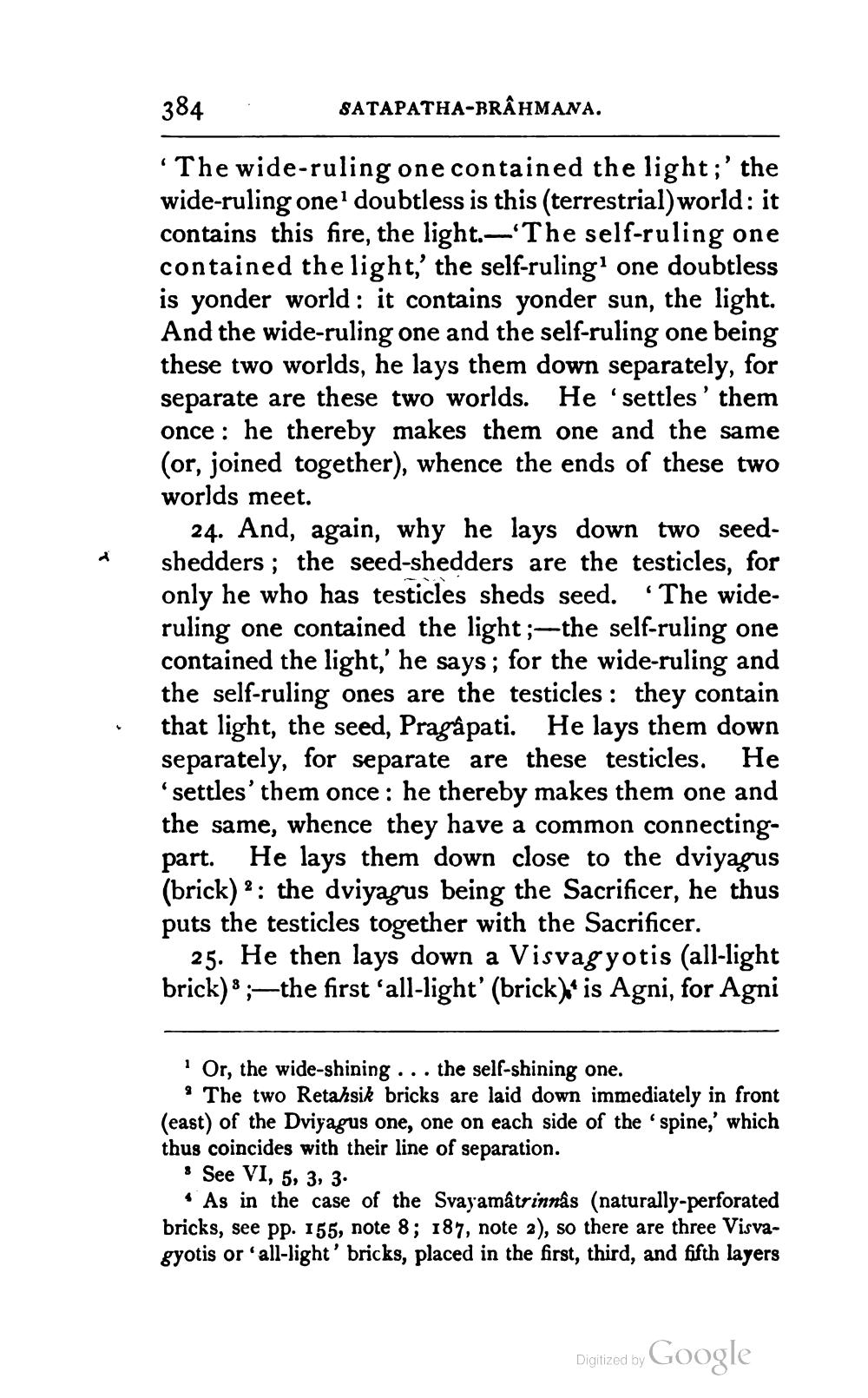________________
384
'The wide-ruling one contained the light;' the wide-ruling one1 doubtless is this (terrestrial) world: it contains this fire, the light.-'The self-ruling one contained the light,' the self-ruling1 one doubtless is yonder world: it contains yonder sun, the light. And the wide-ruling one and the self-ruling one being these two worlds, he lays them down separately, for separate are these two worlds. He 'settles' them once he thereby makes them one and the same (or, joined together), whence the ends of these two worlds meet.
SATAPATHA-BRAHMANA.
24. And, again, why he lays down two seedshedders; the seed-shedders are the testicles, for only he who has testicles sheds seed. The wideruling one contained the light;-the self-ruling one contained the light,' he says; for the wide-ruling and the self-ruling ones are the testicles: they contain that light, the seed, Pragâpati. He lays them down separately, for separate are these testicles. He 'settles' them once: he thereby makes them one and the same, whence they have a common connectingpart. He lays them down close to the dviyagus (brick): the dviyagus being the Sacrificer, he thus puts the testicles together with the Sacrificer.
25. He then lays down a Visvagyotis (all-light brick); the first 'all-light' (brick) is Agni, for Agni
(
'Or, the wide-shining... the self-shining one.
The two Retahsik bricks are laid down immediately in front (east) of the Dviyagus one, one on each side of the 'spine,' which thus coincides with their line of separation.
See VI, 5, 3, 3.
As in the case of the Svayamâtrinnâs (naturally-perforated bricks, see pp. 155, note 8; 187, note 2), so there are three Visvagyotis or 'all-light' bricks, placed in the first, third, and fifth layers
Digitized by Google




